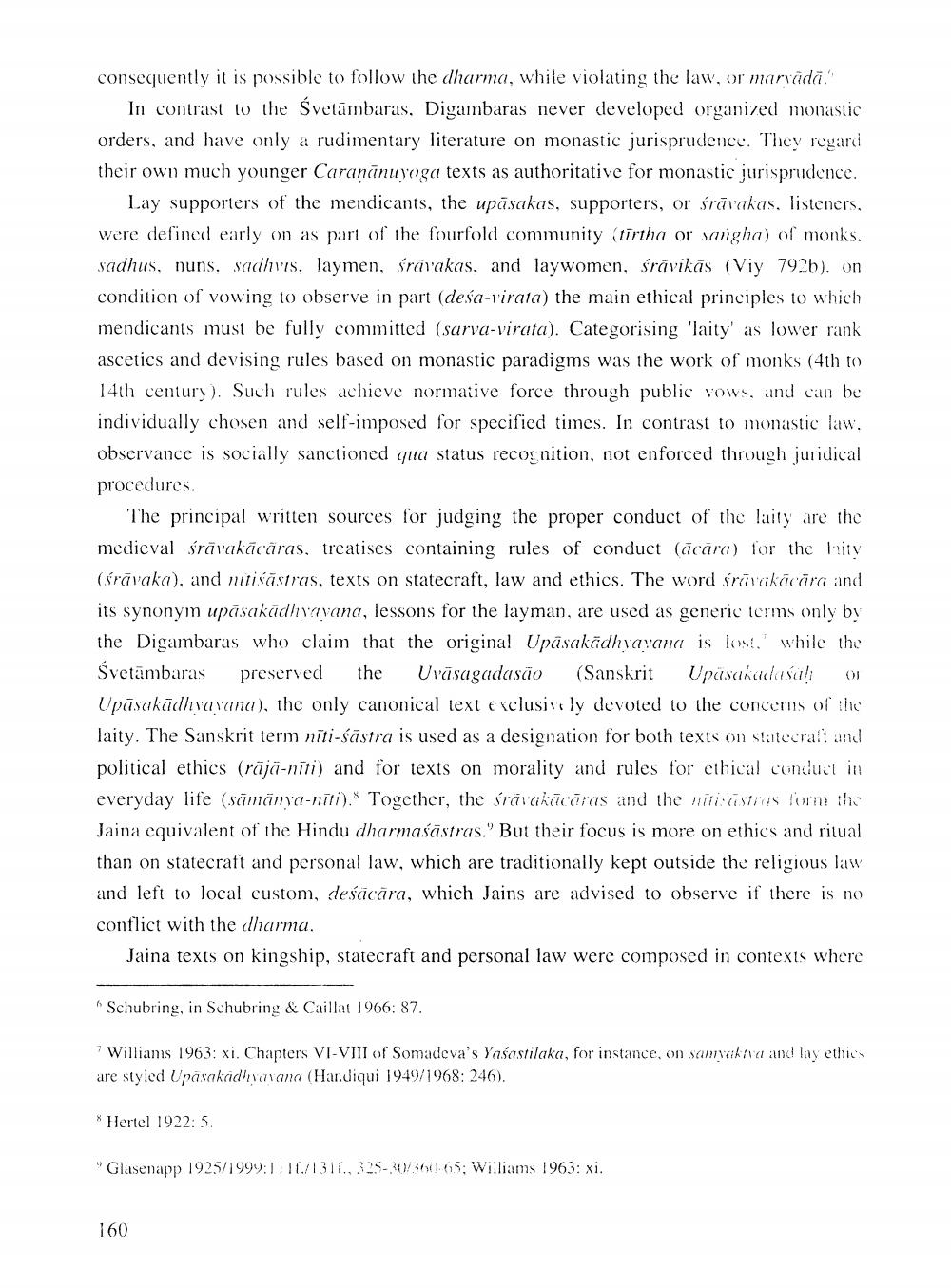________________
consequently it is possible to follow the dharma, while violating the law, or maryādā.
In contrast to the Svetämbaras. Digambaras never developed organized monastic orders, and have only a rudimentary literature on monastic jurisprudence. They regard their own much younger Caraṇanuyoga texts as authoritative for monastic jurisprudence.
Lay supporters of the mendicants, the upasakas, supporters, or fravakas, listeners. were defined early on as part of the fourfold community (tirtha or sangha) of monks. sādhus, nuns, sädhvīs, laymen, śrāvakas, and laywomen, śrāvikās (Viy 792b). on condition of vowing to observe in part (desa-virata) the main ethical principles to which mendicants must be fully committed (sarva-virata). Categorising 'laity as lower rank ascetics and devising rules based on monastic paradigms was the work of monks (4th to 14th century). Such rules achieve normative force through public vows, and can be individually chosen and self-imposed for specified times. In contrast to monastic law. observance is socially sanctioned qua status recognition, not enforced through juridical procedures.
OF
The principal written sources for judging the proper conduct of the laity are the medieval śravakācāras. treatises containing rules of conduct (acara) for the Iity (śravaka), and nitisästras, texts on statecraft, law and ethics. The word śravakācāra and its synonym upasakādhyayana, lessons for the layman, are used as generic terms only by the Digambaras who claim that the original Upasakadhyayana is lost. while the Śvetämbaras preserved the Uvāsagadasão (Sanskrit Upäsakadaṣaḥ Upasakādhyayana), the only canonical text exclusive ly devoted to the concerns of the laity. The Sanskrit term niti-śästra is used as a designation for both texts on statecraft and political ethics (rājā-nīti) and for texts on morality and rules for ethical conduct in everyday life (sāmānya-nīti). Together, the śravakācāras and the niisastras form the Jaina equivalent of the Hindu dharmasastras." But their focus is more on ethics and ritual than on statecraft and personal law, which are traditionally kept outside the religious law and left to local custom, deśācāra, which Jains are advised to observe if there is no conflict with the dharma.
Jaina texts on kingship, statecraft and personal law were composed in contexts where
"Schubring, in Schubring & Caillat 1966: 87.
Williams 1963: xi. Chapters VI-VIII of Somadeva's Yasastilaka, for instance, on samyakiva and lay ethics are styled Upasakadhyavana (Hardiqui 1949/1968: 2461.
Hertel 1922: 5.
Glasenapp 1925/1999:1116/1316, 325-30/360-65; Williams 1963: xi.
160




